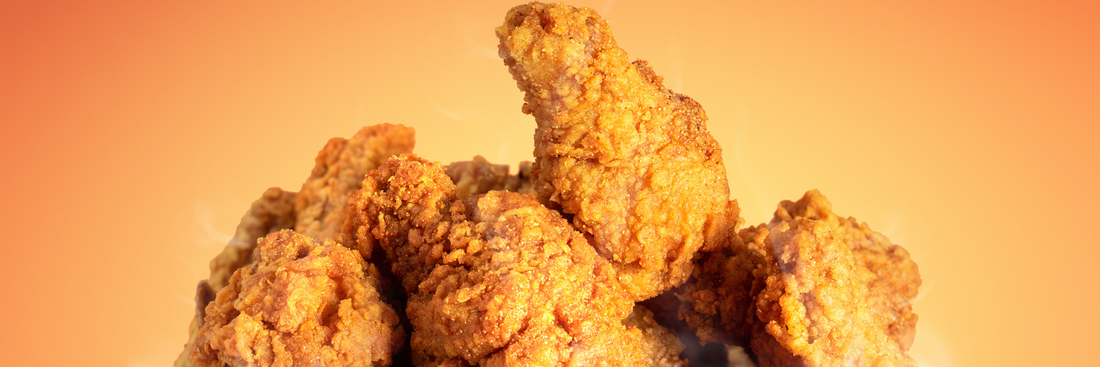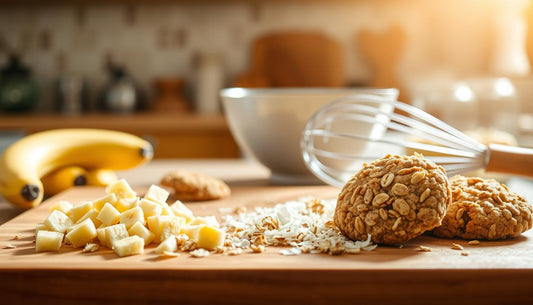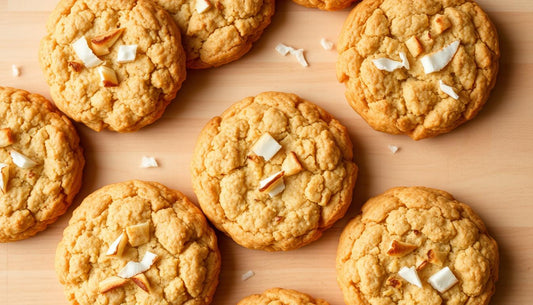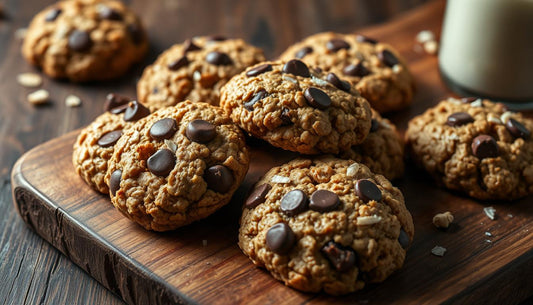When it comes to food safety, understanding how long cooked chicken can sit out is critical. Leaving cooked chicken at room temperature for too long can lead to rapid bacterial growth and increase the risk of foodborne illness. Whether you're serving meals at home, catering an event, or packing leftovers, following proper time and temperature guidelines helps keep your food safe. In this article, we’ll break down the official recommendations, explain common myths, and offer safe handling tips.
- Chicken Temperatures: What Is The Best Temperature To Cook Chicken?
- What is the Best Oil for Frying Chicken Wings & Breast?
Why Time & Temperature Matter
One of the key principles of food safety is this: once cooked food enters the “danger zone” temperature range, bacteria can multiply rapidly. In Canada, the Health Canada defines the danger zone for perishable foods as between 4 °C (40 °F) and 60 °C (140 °F).
Within that zone:
- Bacteria such as Salmonella, Campylobacter, and Clostridium perfringens (among others) are known to cause food-borne illnesses.
- Some bacteria can double in number every 20 minutes or less when conditions are favourable (warm, moist, plenty of nutrients).
- Equally importantly: the presence of bacteria doesn’t always produce visible or odour cues before illness risk becomes significant. Therefore relying on smell or appearance alone is not safe.
For businesses in the food-service, catering or take-out world, this means you don’t just worry about cooking the chicken properly, you must also worry about what happens after it’s cooked: how long it sits, the ambient temperature, how it’s held, transported and packaged. For home cooks, the same principles apply: the “two-hour rule” (or less in hot conditions) is not arbitrary.
Because your brand is involved in eco-friendly food packaging, it’s worth noting that packaging plays a crucial role in maintaining safe temperatures and preventing cross-contaminatio, we’ll cover that more in a later section.
Maximum Time Chicken Can Sit Out
According to the United States Department of Agriculture (USDA) and the Food Safety and Inspection Service (FSIS), cooked chicken must not sit out at room temperature for more than 2 hours. This is due to the risk of bacterial growth when food is in the temperature danger zone, defined as 40 °F to 140 °F (4 °C to 60 °C).
If the ambient temperature is higher above 90 °F (32 °C), such as during outdoor events or in hot kitchens the safe time window drops to just 1 hour.
The reason is that bacteria like Clostridium perfringens, Staphylococcus aureus, and Salmonella can multiply rapidly, especially when conditions are warm and food sits in the open. Under ideal conditions, some bacteria can double every 20 minutes, and certain strains can produce heat-resistant toxins that are not destroyed by reheating.
Once the 1–2 hour limit is exceeded, food safety experts recommend discarding the chicken, even if it looks and smells normal.

Temperature-Specific Considerations
Danger of Hot Weather: 25–30 °C vs Over 30 °C
The “danger zone” accelerates in higher ambient temperatures. For example:
- At 25-30 °C (77-86 °F), bacteria will grow at a moderate rate.
- When temperatures approach or exceed 30 °C (86 °F): common for outdoor events, barbecues, or kitchens in summer, the clock to unsafe conditions moves faster; effectively, you should assume 1 hour max for cooked chicken sitting out.
When hosting an outdoor BBQ or catered event in such conditions, keep cooked chicken shaded, covered, and under temperature-control or bring it indoors quickly into cold/hot holding.
Hot-holding foods (≥ 60 °C / 140 °F)
In restaurant and buffet settings, if cooked chicken is maintained at a hot temperature (≥ 60 °C / 140 °F) consistently, food‐safety guidelines allow longer time before spoilage because bacterial growth is halted or very slow above that threshold. However:
- You must monitor the internal temperature and holding equipment properly.
- Once the food drops below that temperature, the two-hour (or one-hour) rule once again applies.
- For take-out or catering, if the chicken is delivered hot and held in insulated packaging but temperature drops, you must treat that as having entered the danger zone.
Cold foods sitting out
Even if cooked chicken is chilled first (refrigerated) then set out at room temperature (for example at a buffet later), the danger zone time still applies. The clock doesn't reset simply because it was chilled. Bacteria growth begins once the food rises above 4 °C or enters the danger zone. In practical terms: don’t assume you get “extra time” because the chicken was already refrigerated.

Why Refrigerating Promptly Matters
Importance of Cooling Cooked Chicken Within 2 Hours
Prompt refrigeration is crucial because bacteria begin to grow as soon as cooked food enters the danger zone. Within 2 hours, chicken should be cooled and moved into the refrigerator. Delaying this process significantly increases the risk of foodborne illness, even if the chicken is later reheated.
Safe Storage Practices in Airtight Containers
Once refrigerated, store cooked chicken in shallow, airtight containers to cool it quickly and prevent contamination. Avoid stacking hot food in deep containers, as this traps heat and slows cooling, creating conditions ideal for bacterial growth. Labeling with a date also helps ensure it’s used before expiration.
Shelf Life: 3–4 Days Refrigerated, 2–6 Months Frozen
Properly stored in the refrigerator (≤40 °F / 4 °C), cooked chicken is safe to eat for 3 to 4 days. For longer storage, freezing is a safe option; cooked chicken can last 2 to 6 months in the freezer. Although freezing halts bacterial growth, it’s best to consume within this window for optimal texture and flavor.

Myth-Busting Common Misconceptions
Myth 1: Covered Chicken or Sauces Prevent Spoilage — Incorrect
Covering cooked chicken with foil, plastic wrap, or a lid does not protect it from bacterial growth if it sits in the temperature danger zone (40 °F to 140 °F). Warm, moist environments under a cover can actually accelerate bacterial multiplication. Sauces, gravies, or marinades also offer no protection against foodborne pathogens if the chicken is left out too long.
Myth 2: “Looks/Smells Fine” Equals Safety — Unreliable Indicator
Food spoilage bacteria and foodborne pathogens are not the same. Cooked chicken can look, smell, and taste completely normal yet still harbor dangerous levels of bacteria like Salmonella or Clostridium perfringens. Relying on sensory cues alone is not a safe method for judging whether chicken is still edible after sitting out.
Myth 3: Reheating Fully Eliminates All Risks — Toxins May Persist
While reheating to 165 °F (74 °C) can kill many types of bacteria, some bacteria produce heat-resistant toxins. These toxins, such as those from Staphylococcus aureus, can survive normal cooking or reheating temperatures and still cause illness. That’s why the USDA advises discarding food that has sat out longer than the recommended time, even if it will be reheated.
Myth 4: Because the chicken was refrigerated then left out, it’s still okay beyond 2 hours
Wrong. The important factor is how long the chicken is in the danger zone, not where it came from. Whether it was freshly cooked, just pulled from the fridge, or taken out of a cooler once it sits out above 4 °C / 40 °F, the safe time limit begins.
Myth 5: If I throw away some pieces and keep others, I’m fine
Wrong. Bacterial growth doesn’t discriminate by piece if the chicken overall has been in the danger zone too long, all of it is risky. Save‐and‐serve only if the total condition was safe.
Guidelines for Handling and Safe Practices
Recommended Cooling Methods: Shallow Containers, Ice Baths
To safely store cooked chicken, cool it quickly within 2 hours. The best methods include:
- Transferring to shallow containers to allow heat to escape more rapidly.
- Using an ice bath for large quantities: place the food container in a sink or bowl of ice water and stir occasionally to accelerate cooling.
Avoid putting large batches of hot food directly into deep containers or the fridge, as this slows the cooling process and increases the risk of bacterial growth.
Where to Store in Fridge: Cooked vs Raw Separation, ≤40 °F
Always store cooked chicken separately from raw poultry to prevent cross-contamination. Place cooked items on the top shelves of the refrigerator and raw meats on the bottom. Ensure your refrigerator maintains a temperature of 40 °F (4 °C) or below, as per USDA guidelines, to keep food safe.
Best Practices for Transporting and Serving During Hot Weather or Outdoor Events
When transporting or serving cooked chicken outdoors:
- Use insulated coolers with ice packs to keep food below 40 °F.
- For serving hot, use chafing dishes or electric warmers to maintain food above 140 °F.
- Never leave cooked chicken unrefrigerated for more than 1 hour if the outdoor temperature is above 90 °F (32 °C).
- Serve in small batches and replenish often from safely stored containers.
Proper handling ensures that food remains safe from kitchen to table, especially during picnics, catering events, or outdoor dining setups.
When transporting cooked chicken for take-out, catering, or delivery, keeping it hot, fresh, and safe is crucial. The right food packaging helps maintain optimal temperature and prevents moisture buildup or sogginess during transit.
At KimEcopak, our compostable boxes are ideal for hot foods like grilled or roasted chicken. These containers are grease-resistant, heat-stable, and securely sealed to preserve flavor and food safety even during long delivery routes.
Keep your take-out meals eco-friendly and safe without compromising on quality.
Get Sample Now and test how our sustainable packaging keeps cooked chicken hot, fresh, and delicious from kitchen to customer.

FAQs About How Long Can Cooked Chicken Be Left Out
How long can cooked chicken sit out at room temperature?
Up to 2 hours, or 1 hour if above 90 °F (32 °C).
What happens if cooked chicken sits out more than two hours?
Bacteria can grow rapidly, making it unsafe to eat—even if it looks fine.
Does covering cooked chicken keep it safe longer?
No, covering does not prevent spoilage if it's in the danger zone.
Is reheating cooked chicken that has sat out safe?
No, reheating won't destroy heat-resistant toxins already produced.
How long can cooked chicken sit out if it's kept warm (with a warmer)?
As long as it stays above 140 °F (60 °C), it can be held safely for several hours.
Can previously refrigerated cooked chicken sit out longer safely?
No, once it's at room temperature, the 2-hour limit still applies.
How quickly should I refrigerate cooked chicken?
Within 2 hours of cooking or within 1 hour if the room is hot.
Conclusion
Knowing how long cooked chicken can sit out can prevent serious health risks. The general rule is simple: no more than 2 hours at room temperature, or 1 hour if the environment is hot. Covering or reheating won’t make unsafe chicken safe again. By refrigerating promptly and following proper food handling practices, you can protect yourself and others from foodborne illness.
Related Article:
Choosing the Best Chicken Bucket Size for Your Restaurant or Takeout







